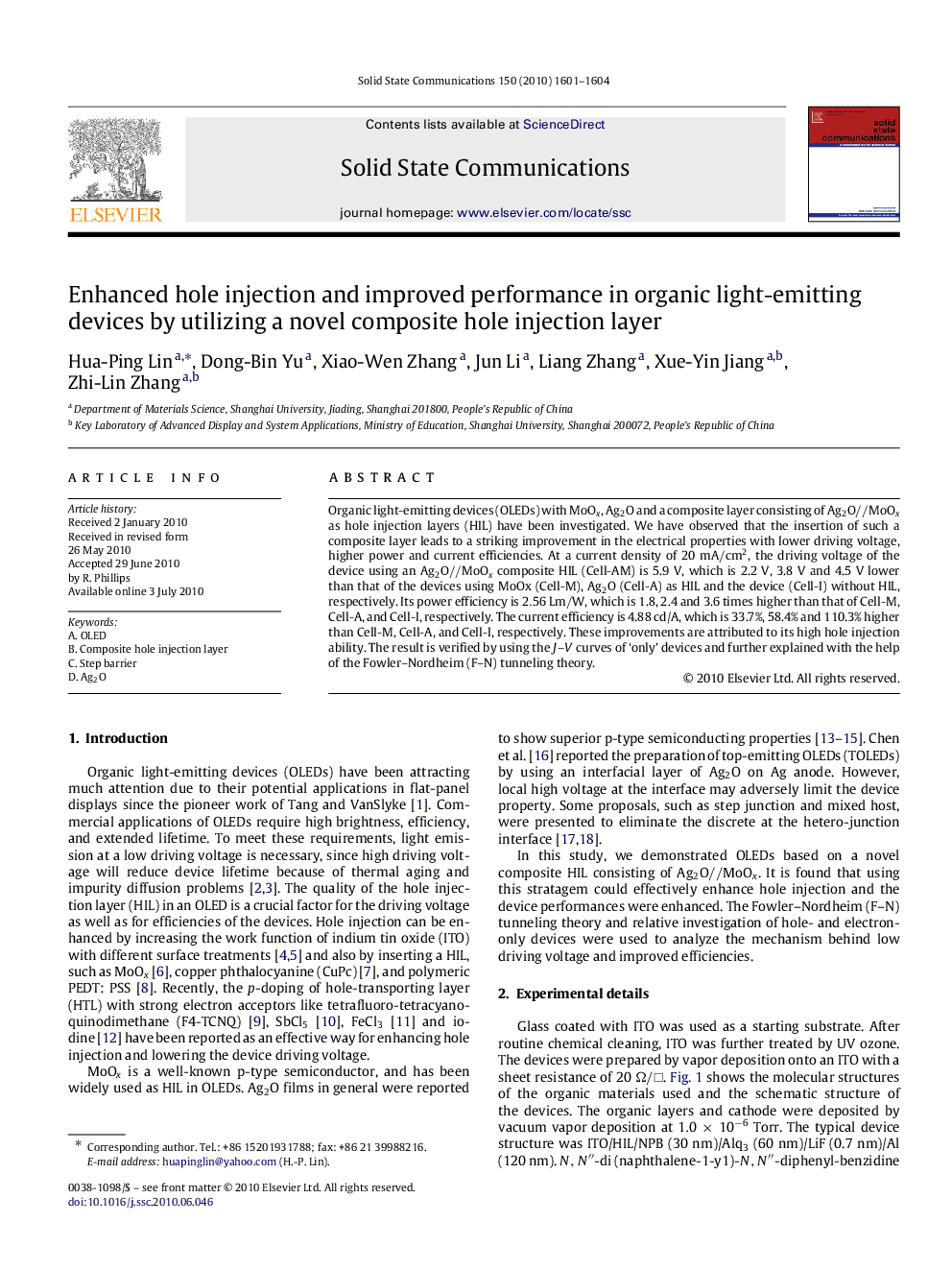| Article ID | Journal | Published Year | Pages | File Type |
|---|---|---|---|---|
| 1594385 | Solid State Communications | 2010 | 4 Pages |
Abstract
Organic light-emitting devices (OLEDs) with MoOx, Ag2O and a composite layer consisting of Ag2O//MoOx as hole injection layers (HIL) have been investigated. We have observed that the insertion of such a composite layer leads to a striking improvement in the electrical properties with lower driving voltage, higher power and current efficiencies. At a current density of 20Â mA/cm2, the driving voltage of the device using an Ag2O//MoOx composite HIL (Cell-AM) is 5.9Â V, which is 2.2Â V, 3.8Â V and 4.5Â V lower than that of the devices using MoOx (Cell-M), Ag2O (Cell-A) as HIL and the device (Cell-I) without HIL, respectively. Its power efficiency is 2.56Â Lm/W, which is 1.8, 2.4 and 3.6 times higher than that of Cell-M, Cell-A, and Cell-I, respectively. The current efficiency is 4.88 cd/A, which is 33.7%, 58.4% and 110.3% higher than Cell-M, Cell-A, and Cell-I, respectively. These improvements are attributed to its high hole injection ability. The result is verified by using the J-V curves of 'only' devices and further explained with the help of the Fowler-Nordheim (F-N) tunneling theory.
Related Topics
Physical Sciences and Engineering
Materials Science
Materials Science (General)
Authors
Hua-Ping Lin, Dong-Bin Yu, Xiao-Wen Zhang, Jun Li, Liang Zhang, Xue-Yin Jiang, Zhi-Lin Zhang,
